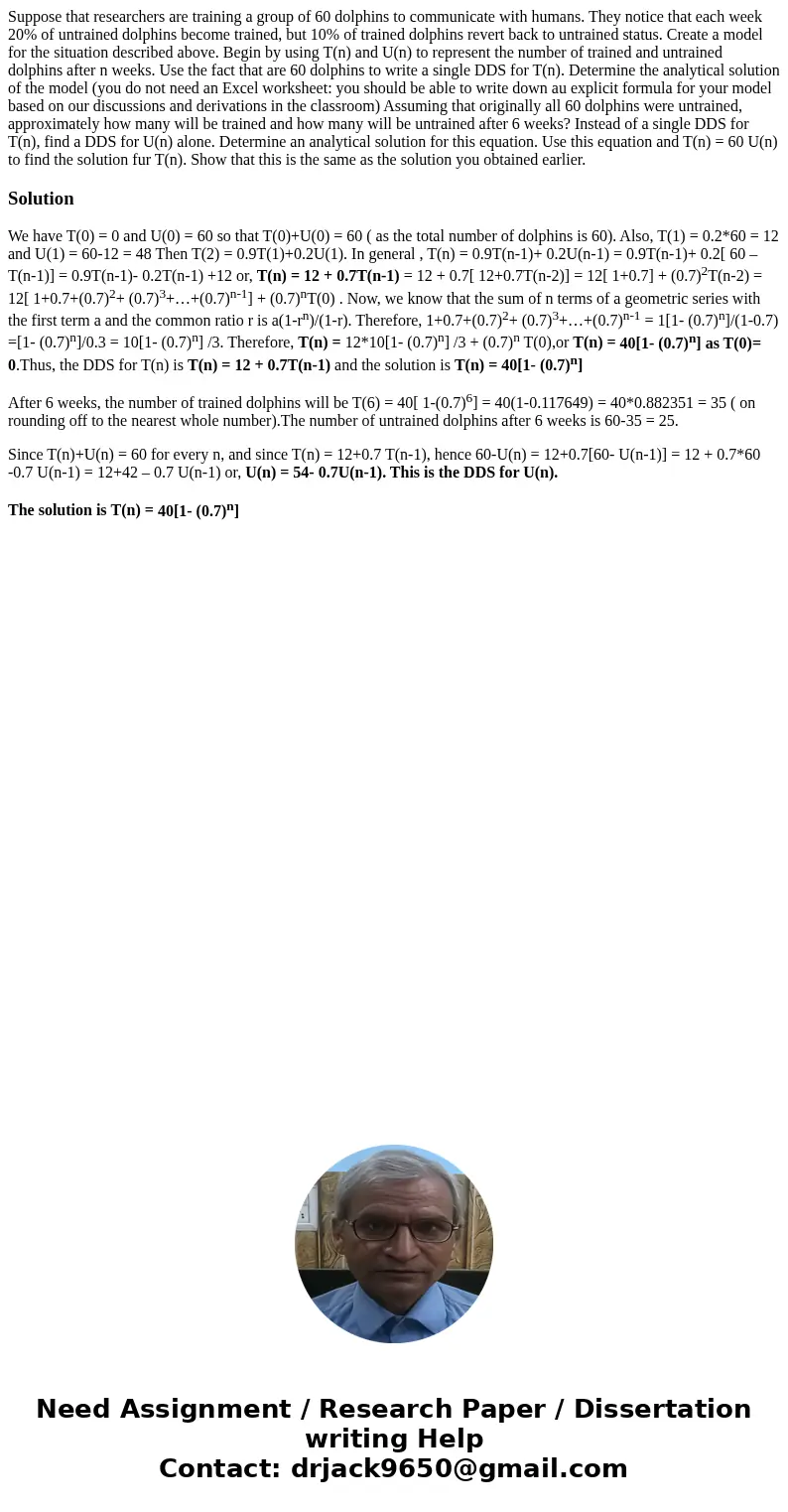Suppose that researchers are training a group of 60 dolphins
Solution
We have T(0) = 0 and U(0) = 60 so that T(0)+U(0) = 60 ( as the total number of dolphins is 60). Also, T(1) = 0.2*60 = 12 and U(1) = 60-12 = 48 Then T(2) = 0.9T(1)+0.2U(1). In general , T(n) = 0.9T(n-1)+ 0.2U(n-1) = 0.9T(n-1)+ 0.2[ 60 – T(n-1)] = 0.9T(n-1)- 0.2T(n-1) +12 or, T(n) = 12 + 0.7T(n-1) = 12 + 0.7[ 12+0.7T(n-2)] = 12[ 1+0.7] + (0.7)2T(n-2) = 12[ 1+0.7+(0.7)2+ (0.7)3+…+(0.7)n-1] + (0.7)nT(0) . Now, we know that the sum of n terms of a geometric series with the first term a and the common ratio r is a(1-rn)/(1-r). Therefore, 1+0.7+(0.7)2+ (0.7)3+…+(0.7)n-1 = 1[1- (0.7)n]/(1-0.7) =[1- (0.7)n]/0.3 = 10[1- (0.7)n] /3. Therefore, T(n) = 12*10[1- (0.7)n] /3 + (0.7)n T(0),or T(n) = 40[1- (0.7)n] as T(0)= 0.Thus, the DDS for T(n) is T(n) = 12 + 0.7T(n-1) and the solution is T(n) = 40[1- (0.7)n]
After 6 weeks, the number of trained dolphins will be T(6) = 40[ 1-(0.7)6] = 40(1-0.117649) = 40*0.882351 = 35 ( on rounding off to the nearest whole number).The number of untrained dolphins after 6 weeks is 60-35 = 25.
Since T(n)+U(n) = 60 for every n, and since T(n) = 12+0.7 T(n-1), hence 60-U(n) = 12+0.7[60- U(n-1)] = 12 + 0.7*60 -0.7 U(n-1) = 12+42 – 0.7 U(n-1) or, U(n) = 54- 0.7U(n-1). This is the DDS for U(n).
The solution is T(n) = 40[1- (0.7)n]

 Homework Sourse
Homework Sourse